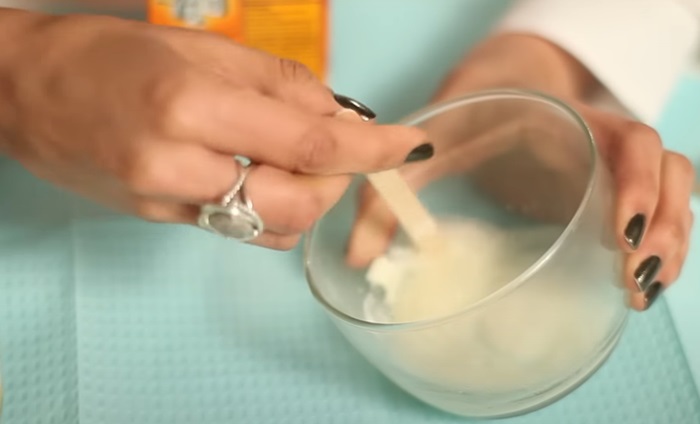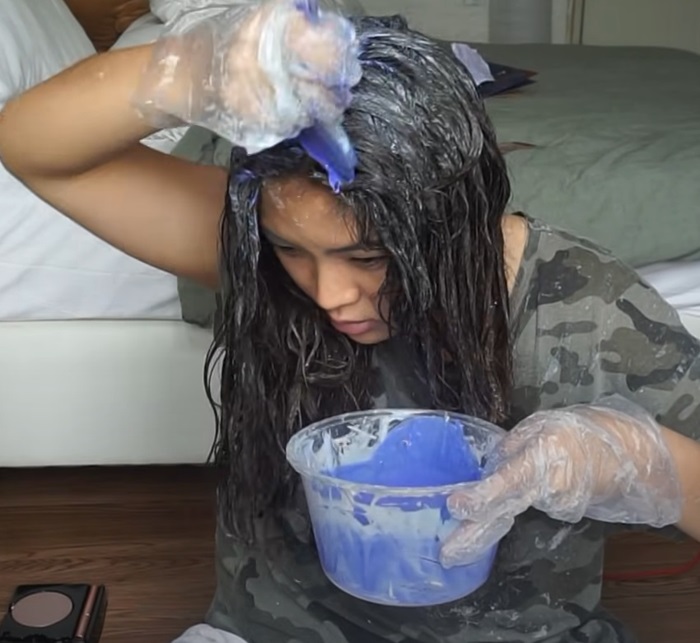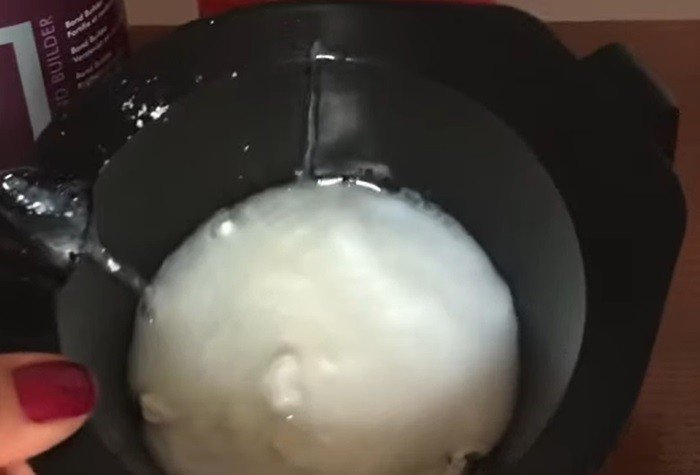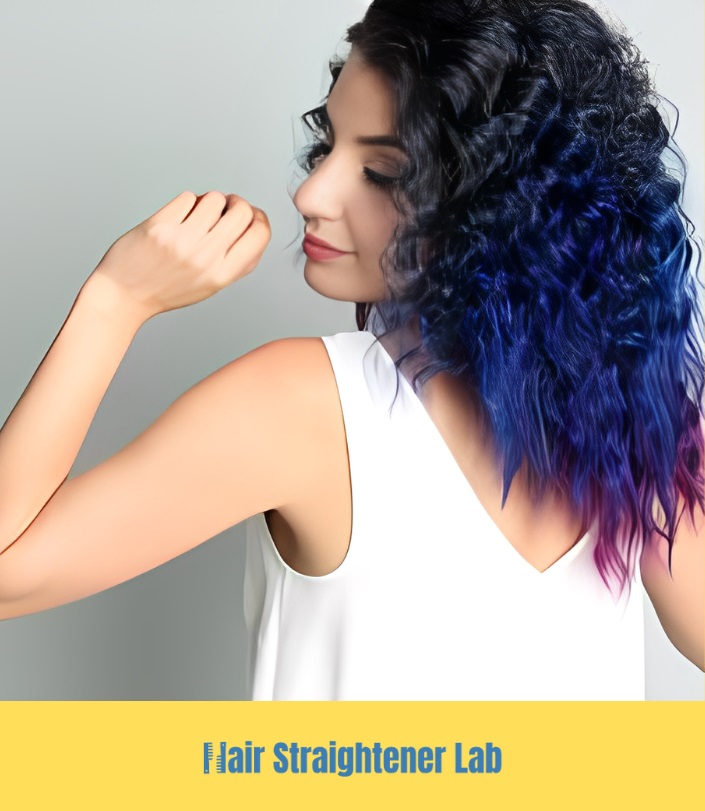As an Amazon Associate I earn from qualifying purchases. Learn More
Blue hair dye can be a bold and exciting choice, but there comes a time when you might want to return to your natural hair color or try a new shade. Removing blue hair dye presents unique challenges, as the pigment can be stubborn and hard to fade. In this comprehensive guide, we’ll explore various methods and tips to effectively remove blue hair dye, ensuring your hair remains healthy and vibrant throughout the process.

How to Remove Blue Hair Dye?
Precautions Before Using Hair Dye Removal
Before diving into the hair dye removal process, it’s important to consider the following precautions:
- Assess the condition of your hair: If your hair is damaged or over-processed, some removal methods might cause further harm. In such cases, consider seeking professional help or using gentle methods.
- Perform a strand test: Before applying any removal method to your entire head, perform a strand test to see how your hair reacts to the chosen method.
- Consider consulting a professional: If you’re unsure about the best method for your hair, it’s always a good idea to consult a professional hairstylist for advice.
Method 1: Hair Color Remover
Hair color removers are specially designed products that can help strip dye from your hair without causing significant damage. They work by breaking down the artificial color molecules, making it easier to wash them out.
How to use a hair color remover:
- Choose a hair color remover suitable for your hair type and the dye you want to remove.
- Follow the manufacturer’s instructions carefully.
- Apply the product evenly to your hair, ensuring full coverage.
- Allow the product to sit for the recommended time.
- Rinse thoroughly and follow up with a nourishing conditioner.
Pros and cons of using hair color removers:
Pros:
- Effective at removing dye
- Less damaging than other methods
Cons:
- Can be expensive
- May not work on all dye types
Method 2: Anti-dandruff Shampoo and Baking Soda

Anti-dandruff shampoo and baking soda can work together to help strip color from your hair. The anti-dandruff shampoo has a higher pH level, which opens the hair cuticle, while baking soda is mildly abrasive, helping to remove the dye.
Step-by-step guide to using this method:
- Mix equal parts anti-dandruff shampoo and baking soda in a bowl.
- Apply the mixture to damp hair, focusing on areas with the most dye.
- Massage the mixture into your hair for a few minutes.
- Allow the mixture to sit for 15-20 minutes.
- Rinse thoroughly and follow up with a nourishing conditioner.
Pros and cons of using anti-dandruff shampoo and baking soda:
Pros:
- Inexpensive
- Accessible ingredients
Cons:
- Can be drying to the hair
- May not remove all dye in one application
Method 3: Vitamin C Treatment
Vitamin C is an effective hair dye remover due to its acidic nature, which can help break down color molecules and lift them from your hair.
A step-by-step guide to using a vitamin C treatment:
- Crush 5-10 vitamin C tablets into a fine powder.
- Mix the powder with enough shampoo to create a thick paste.
- Apply the mixture to damp hair, focusing on areas with the most dye.
- Massage the mixture into your hair for a few minutes.
- Allow the mixture to sit for 30-60 minutes.
- Rinse thoroughly and follow up with a nourishing conditioner.
Pros and cons of using vitamin C treatments:
Pros:
- Inexpensive and easily accessible
- Gentle on the hair
Cons:
- Can be time-consuming
- May require multiple applications for desired results
Method 4: Dish Soap and Baking Soda

Dish soap is designed to break down grease and stains, making it effective at removing hair dye when combined with the mildly abrasive properties of baking soda.
Step-by-step guide to using this method:
- Mix equal parts dish soap and baking soda in a bowl.
- Apply the mixture to damp hair, focusing on areas with the most dye.
- Massage the mixture into your hair for a few minutes.
- Allow the mixture to sit for 15-20 minutes.
- Rinse thoroughly and follow up with a nourishing conditioner.
Pros and cons of using dish soap and baking soda:
Pros:
- Inexpensive and accessible ingredients
- Can be effective at removing stubborn dye
Cons:
- Can be drying to the hair
- May not remove all dye in one application
Method 5: Bleaching

Bleaching is a process that uses strong chemicals to strip away color from your hair. While it can be effective at removing dye, it can also be damaging if not done correctly.
Step-by-step guide to bleaching your hair:
- Choose a bleach powder and developer appropriate for your hair type.
- Follow the manufacturer’s instructions to mix the bleach and developer.
- Apply the bleach mixture to your hair, avoiding the scalp.
- Allow the bleach to process for the recommended time.
- Rinse thoroughly and follow up with a nourishing conditioner.
Pros and cons of using hair bleach:
Pros:
- Can effectively remove dye
- Provides a blank canvas for a new color
Cons:
- Can be damaging to the hair
- Requires careful application and timing
Safety tips and precautions for hair bleaching:
- Always perform a strand test before bleaching your entire head.
- Wear gloves and old clothes to protect your skin and clothing.
- Consider seeking professional help if you’re inexperienced with bleaching.
Method 6: Gradual Fading
Gradual fading is the process of allowing your hair dye to naturally fade over time. While this method requires patience, it is the least damaging option.
Tips to accelerate the fading process:
- Wash your hair with warm water, which opens the hair cuticle and encourages dye to escape.
- Use clarifying or anti-dandruff shampoos, as they can help remove color.
- Limit exposure to sunlight and chlorinated water, which can contribute to color fading.
Pros and cons of using the gradual fading method:
Pros:
- Gentle on the hair
- Requires no additional products
Cons:
- Time-consuming
- Results may be unpredictable
FAQs: Remove Blue Hair Dye
How to remove blue hair dye?
Removing blue hair dye with different methods, like using Hair Color Remover, Anti-dandruff shampoo and Baking Soda, Vitamin C Treatment, Dish Soap and Baking Soda, Bleaching and Gradual Fading.
What is the safest method to remove blue hair dye?
The safest method depends on your hair’s condition and type. Generally, natural methods like using Vitamin C treatment or Anti-dandruff shampoo and baking soda.
How long should I wait before attempting to remove the blue dye?
It’s advisable to wait at least a few weeks after dyeing your hair. This waiting period allows the color to fade naturally, which can make the removal process easier and less damaging.
Can natural remedies effectively remove blue hair dye?
Yes, natural remedies can be effective, especially for lightening or partially fading the dye. Methods like using baking soda or lemon juice can help, but they may require multiple applications and work best on semi-permanent dyes.
Conclusion
Removing blue hair dye can be a challenging but manageable process. Whether you choose a natural method, a chemical solution, or professional assistance, it’s important to prioritize the health and well-being of your hair. By following these 6 methods, you can achieve your desired hair color while maintaining its strength and vitality.
